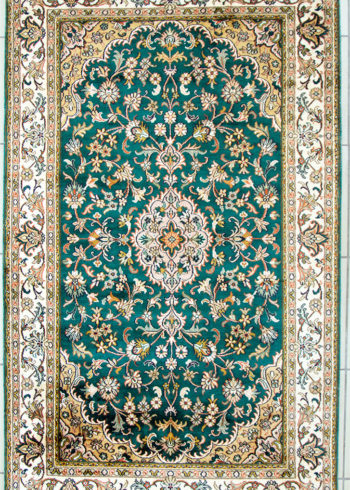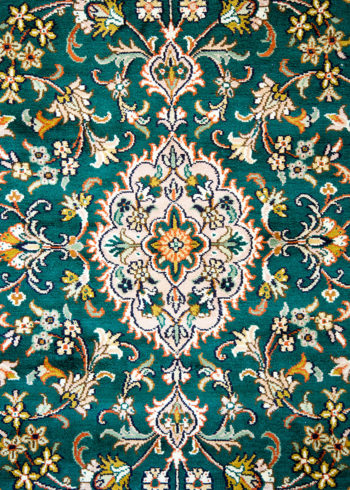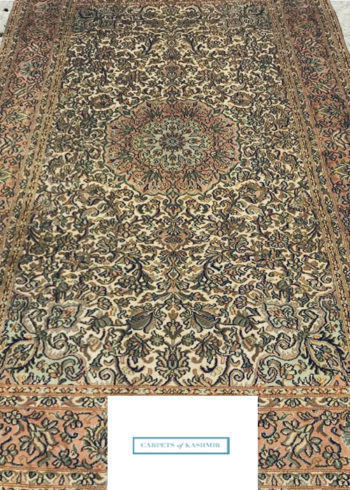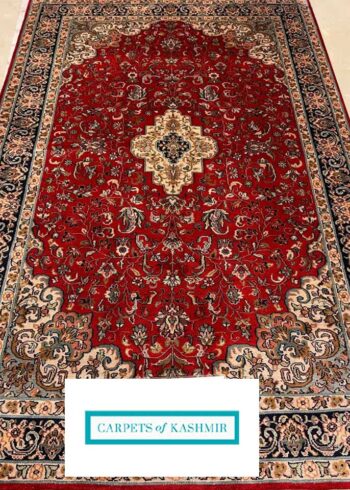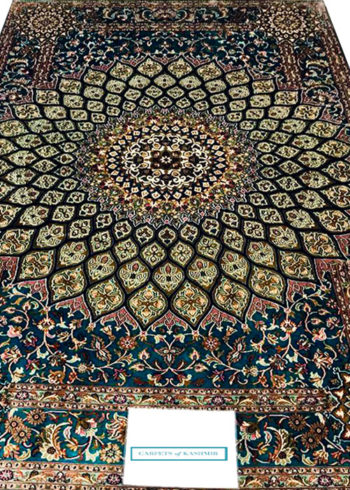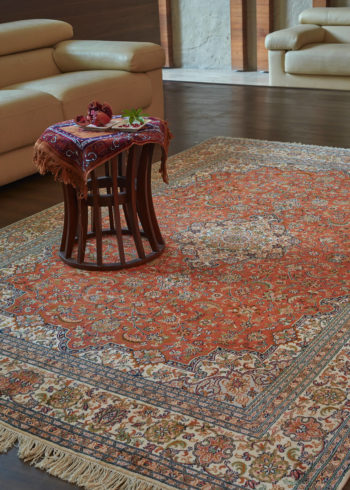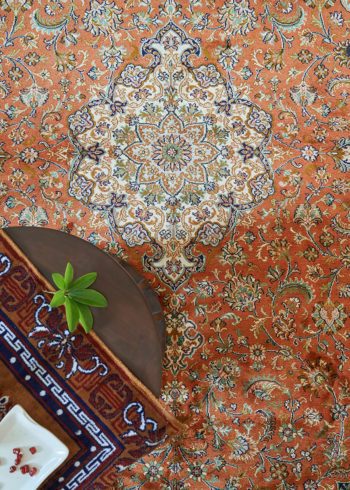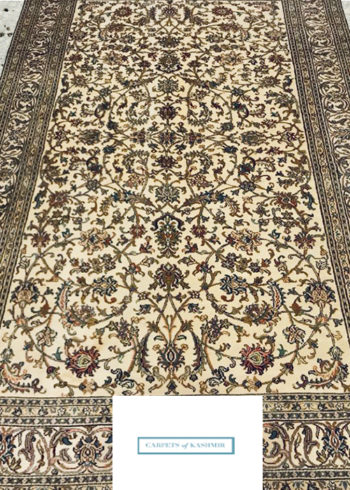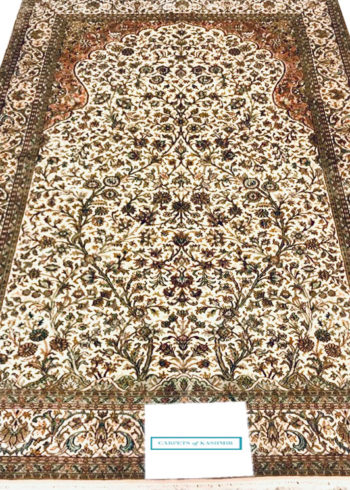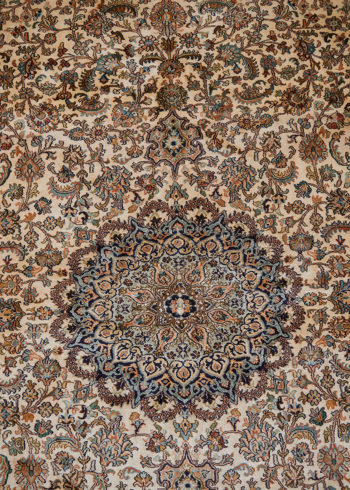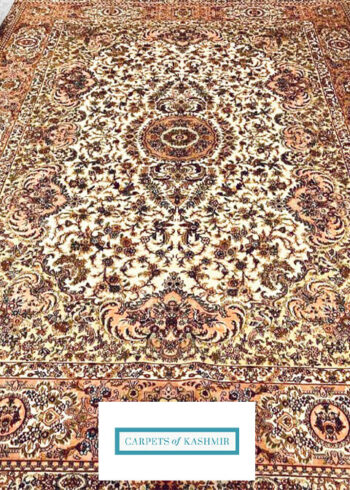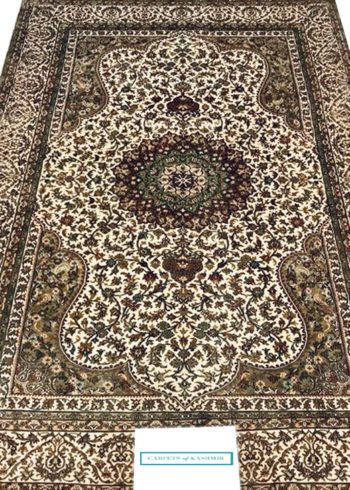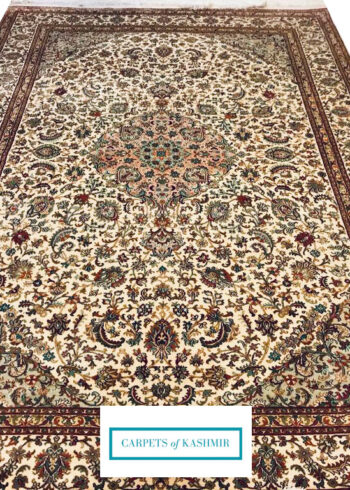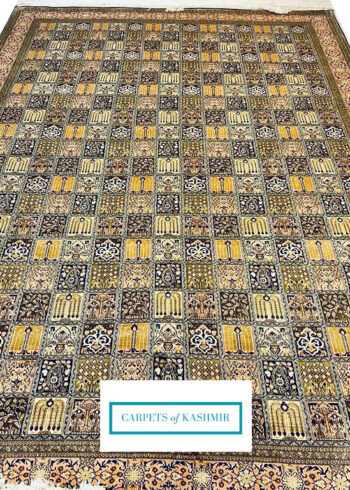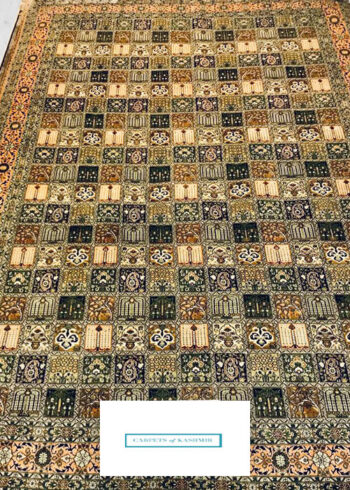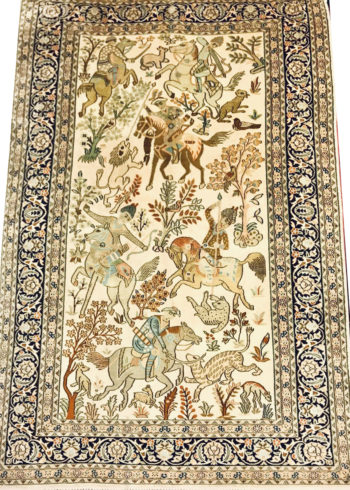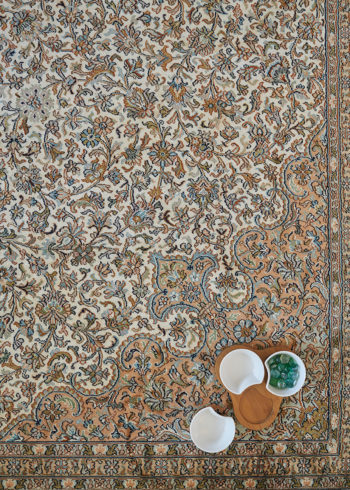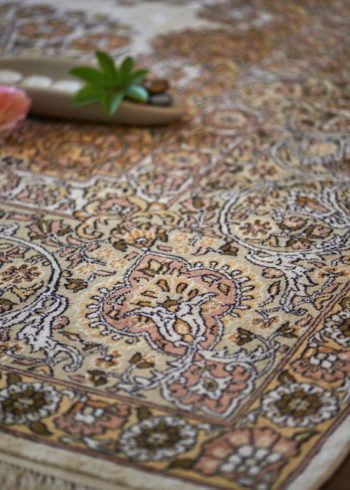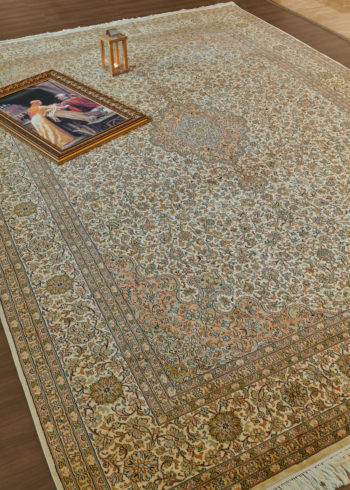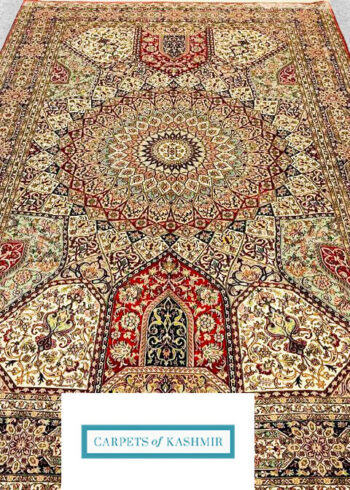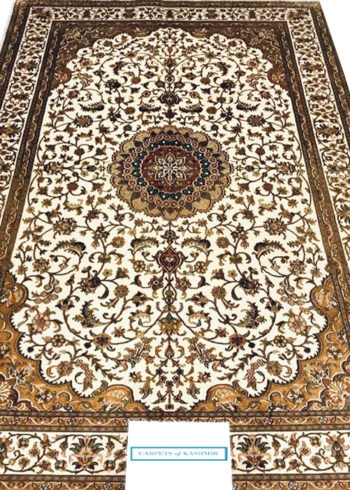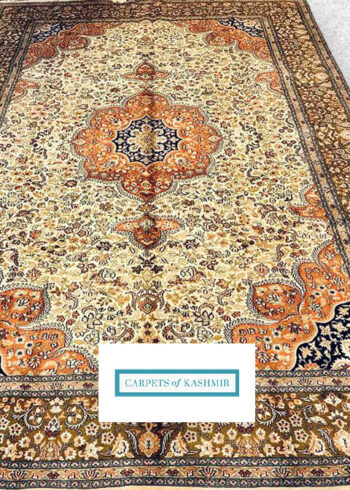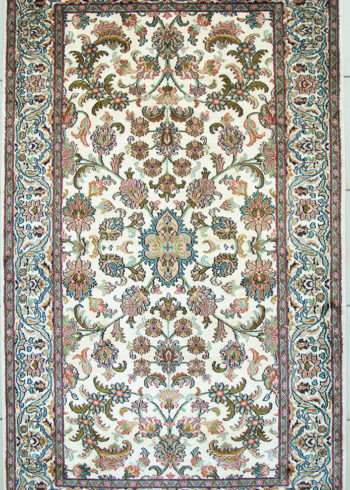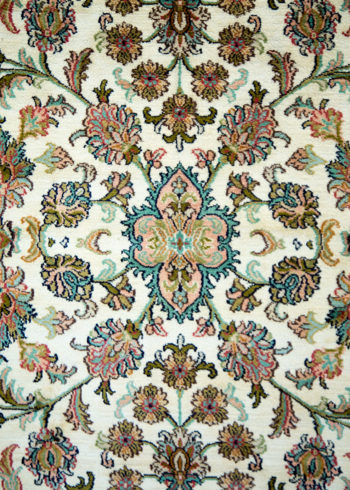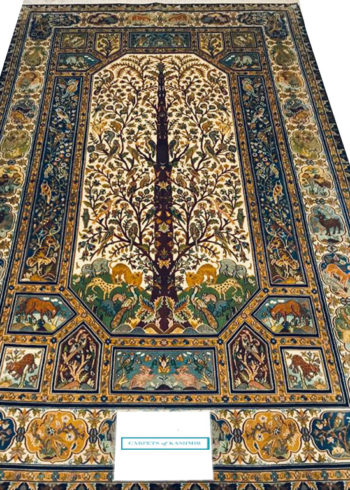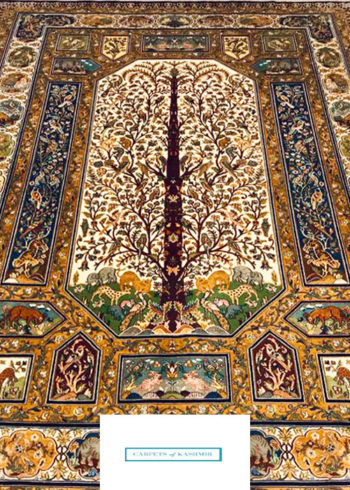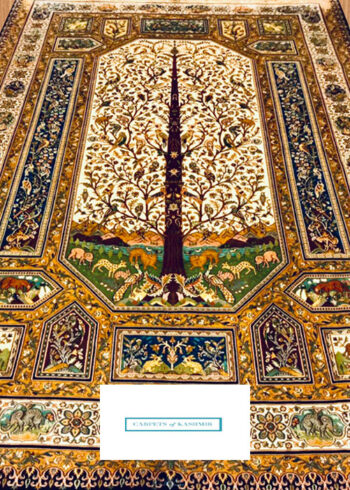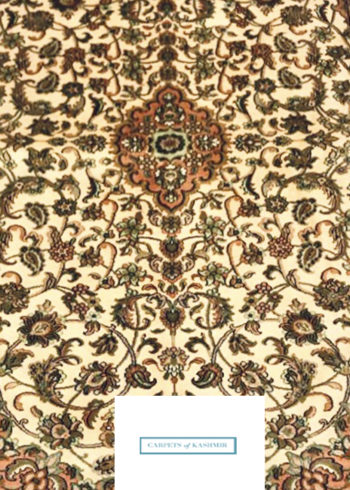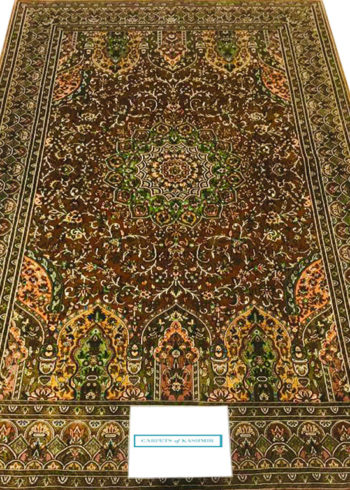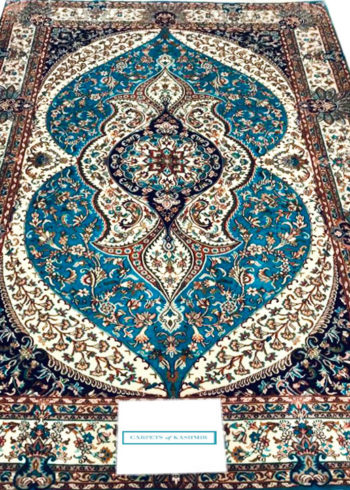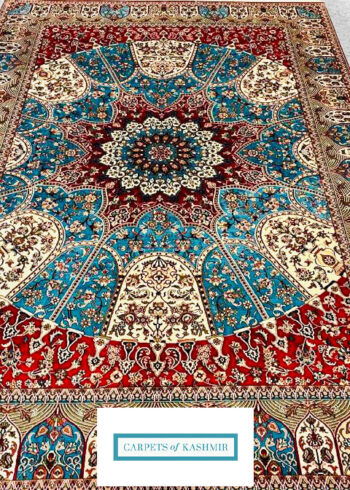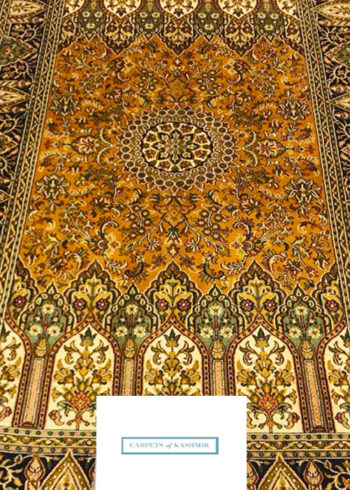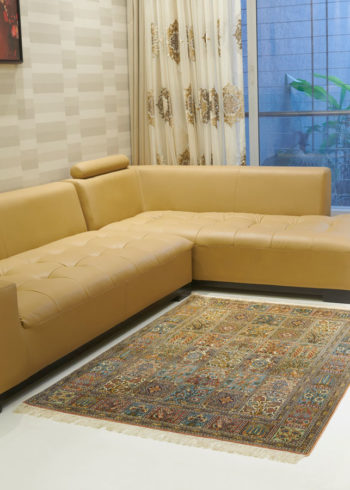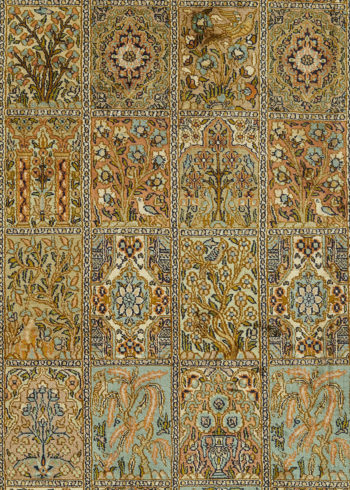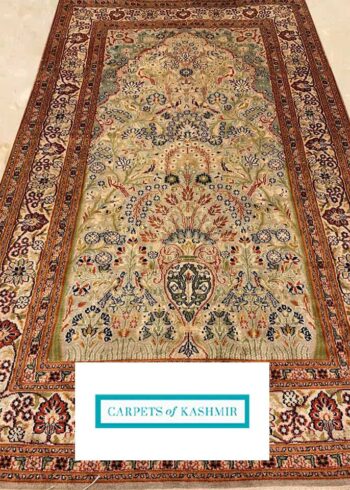Threads of Tradition: Exploring the Rich Heritage of Kashmiri Hand-Knotted Rugs
Kashmir, a region nestled in the Himalayan mountains, is not only known for its breathtaking natural beauty but also for its rich cultural heritage. Among its many treasures is the art of hand-knotted rug weaving.
Kashmiri hand-knotted rugs are a testament to the region’s time-honored traditions, exquisite craftsmanship, and the enduring legacy of its artisans.
In this article, we embark on a journey to explore the rich heritage of Kashmiri hand-knotted rugs, delving into their historical significance, the weaving process, and the stories woven within their intricate designs.
Luxury rugs exude a level of opulence that transcends ordinary floor coverings, captivating your senses with their artistic patterns and sumptuous textures, adding an unmistakable touch of grandeur to your space.
At our Mumbai based showroom; we have 2000+ ready in stock Kashmiri rugs.
The Finest Natural Mulberry Silk Kashmiri Rugs »
Pure Silk
Pure Silk
Pure Silk
Pure Silk
Pure Silk
Pure Silk
Pure Silk
Pure Silk
Pure Silk
Pure Silk
Pure Silk
Pure Silk
Pure Silk
Pure Silk
Pure Silk
Pure Silk
Pure Silk
Pure Silk
Pure Silk
Pure Silk
Pure Silk
Pure Silk
Pure Silk
Pure Silk
Pure Silk
Pure Silk
Pure Silk
Pure Silk
Pure Silk
Pure Silk
Pure Silk
Pure Silk
Pure Silk
Pure Silk
Pure Silk
Pure Silk
A Glimpse into History:
The roots of hand-knotted rug weaving in Kashmir can be traced back over five centuries. It is believed that the art was introduced to the region by Persian artisans during the reign of Sultan Zain-ul-Abidin, also known as Budshah, in the 15th century. Under his patronage, the craft flourished, and Kashmiri rugs gained prominence for their exceptional quality and artistic beauty.
The Mughal emperors further contributed to the development of this art form, with Emperor Akbar establishing rug workshops and attracting skilled artisans from Persia and Central Asia.
These artisans brought with them their expertise, which blended with the indigenous weaving techniques and design aesthetics of Kashmir.
All About The Rich Heritage »
The Weaving Process:
The creation of a Kashmiri hand-knotted rug is a labor-intensive process that requires exceptional skill, patience, and attention to detail. It begins with the selection of the finest wool, usually sourced from the Changthangi breed of sheep, native to the high-altitude pastures of Ladakh. The wool is renowned for its softness, durability, and ability to absorb rich natural dyes.
The wool is meticulously washed, carded, and spun by hand to prepare it for weaving. The loom used for weaving a Kashmiri rug is typically a vertical, non-mechanical loom known as a “khaddar.” The weaver meticulously ties each knot around a pair of warp threads using a small, hooked tool called a “tumbe.” The knots are tied with precision, ensuring uniformity and density throughout the rug.
Traditionally, the motifs and designs are not graphed or drawn but are instead passed down from generation to generation through oral tradition and memory. This allows for the weavers’ artistic expression and contributes to the uniqueness of each rug.
We have 2000+ ready-in-stock rugs at our Mumbai-based showroom. The designs are predominantly divided into floral, geometric, and pictorial ( a.k.a wall hangings).
The weavers carefully follow the patterns and motifs, working row by row to create the intricate designs that characterize Kashmiri rugs.
Designs That Tell Stories:
The designs found in Kashmiri rugs are not just random patterns; they have carefully crafted narratives that tell stories. These designs often draw inspiration from the region’s rich flora and fauna, as well as its cultural motifs and historical events. The intricate patterns, geometric shapes, and symbolic elements imbue the rugs with a unique charm, making each piece a work of art.
We have 2000+ ready-in-stock rugs at our Mumbai-based showroom. The designs are predominantly divided into floral, geometric, and pictorial ( a.k.a wall hangings).
Kashmiri rugs showcase a wide range of motifs, including floral patterns, paisley designs (known as buta), and intricate medallions. These motifs are meticulously woven into the rug, with each element holding a symbolic meaning. For example, the lotus flower symbolizes purity and enlightenment, while the Tree of Life represents fertility and abundance.
Making of Authentic Hand Knotted Carpets »
The Enduring Legacy:
Kashmiri hand-knotted rugs are not merely decorative pieces; they are a living testament to the skill and creativity of generations of artisans. These rugs have become a part of the cultural identity of Kashmir, preserving and perpetuating the region’s artistic traditions.
The craft of hand-knotted rug weaving has been passed down through families for centuries. Each artisan invests years of their life honing their skills and mastering the techniques. The knowledge is transferred from master weavers to apprentices, ensuring the preservation of traditional craftsmanship and artistic integrity.
Here are the 5 Tips for Finding Authentic Kashmir Oriental Carpets.
Moreover, the timelessness and durability of Kashmiri rugs make them valuable heirlooms. They are often passed down through generations, carrying with them stories, memories, and the spirit of Kashmir. These rugs serve as a connection to the past and a reminder of the rich cultural heritage that continues to thrive in the region.
Conclusion »
Kashmiri hand-knotted rugs are not just floor coverings; they are the threads that connect the present with the past, embodying the rich heritage and artistic traditions of Kashmir. From the historical influences to the meticulous weaving process and the captivating designs, each rug tells a story and carries the legacy of its artisans.
Owning a Kashmiri hand-knotted rug means embracing a piece of history, a work of art that encapsulates the beauty, craftsmanship, and cultural richness of the region. These rugs not only enhance the aesthetics of any space but also serve as a symbol of tradition, artistry, and enduring beauty.
So, let the threads of tradition woven within Kashmiri hand-knotted rugs weave their magic and create a tapestry of elegance and heritage in your home.



